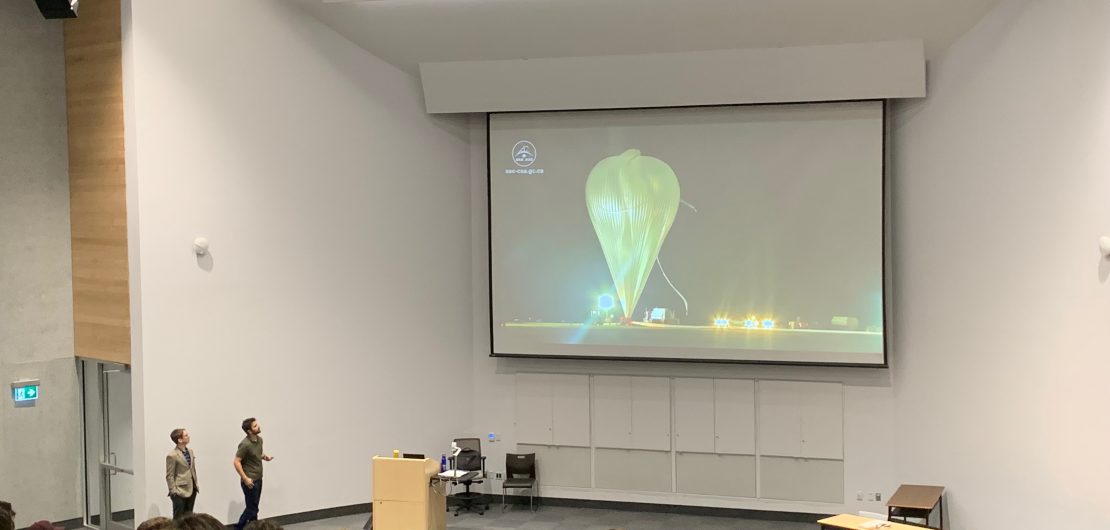
LORIS’s Code is Going to the Arctic
Our LORIS cubesat mission is not only flying to space, but it’s also going to the Arctic. Earlier this year, we submitted the entirety of LORIS’s code to GitHub’s 2020 “Arctic Vault Program”, an initiative that plans to store open-source code in a specially-designed facility 250-metres below the permafrost of Svalbard near the North Pole. With only a select number of projects chosen to be placed in the vault, all of LORIS’s code will be preserved, ensuring its long existence for future generations.We sat down with LORIS’s Payload team lead, Liam Hebert, to speak more about the onboard software and what the Arctic Vault Program means to him.
Why did you choose to make LORIS’s code open source?
Liam Hebert: We chose to make LORIS’s software open-source because we believe that one of the core values of the CubeSat is educational outreach. As one of the only actively developed open source CubeSat projects out there, we believe that allowing people to peek into the magic under the hood can inspire future generations of CubeSats to be created. We also hope that our software can serve as an educational tool for students studying applications of software in space by looking into a satellite that will be in orbit. We hope that future CubeSats will be able to use our software as a starting point to create their own innovations, which we hope to benefit from as well. Seeing that the majority of our software is created on top of open source software,it only seemed fair to give back to the community that made this possible in the first place.
What is most exciting to you about the Arctic Vault Program?
LH: I’d say the most exciting part of the Arctic Vault Program is the longevity of the archive period. With the current standard set to be 500 years with goals to incorporate Microsoft’s Project Silica to extend the duration to 10,000 years, it is truly humbling to know that the efforts we produced with this project will last that long. It is crazy to think how much technology will probably have changed in that period of time and to have LORIS stand as an example of the technology of our time is amazing.
What is the job of the software and how does it work?
LH: My favorite question! The LORIS software collection consists of various independent modules that all share messages to each other. These modules include things such as the ADCS module (which ensures that we are always pointing at the Earth), the POWER module(bet you can’t guess what this one does) and my favorite module, the PAYLOAD module (which my team creates). These are all interconnected through a decentralized messaging system which allows one module to ask another module to do something and receive confirmation in return. An example of this would be the PAYLOAD module asking the ADCS module if we are pointed towards Nova Scotia and the POWER module to give power to the cameras that PAYLOAD requires. This cooperation between independent subsystems allows each module to run in parallel and allows for many fail safes if one system were to fail. Our messaging system was also custom made for our purposes through a partnership between the different software teams that compose the satellite, allowing us to create a slim and lean system thataccomplishes exactly our use case without making any compromises!Specifically, the PAYLOAD software coordinates the camera system that the LORIS satellitehas. This involves activating our cameras in the fastest way possible, taking the pixel values ofboth then compressing them on board the satellite for transmission. This all needs to happenwithout visual degradation, with tons of failsafes, and within 300 milliseconds! We do thisthrough speedy low-level optimizations and by using the OpenCV framework, thestate-of-the-art computer vision software library. We also need to seamlessly integrate with themessaging system above, which requires frequent partnership with the other systems onboard.
What is unique about LORIS’s code?
LH: In my own personal opinion, the unique nature of the satellite is that everything we mentioned above is open to the public. This allows the public to use our software to base their own future cubesats on. Additionally, we use a decentralized system filled with fail safes because space can be very uncertain at times, especially on computer hardware. Dalhousie Space Systems Labs is excited and thankful to Github for the opportunity to take part in this incredible project. Despite online challenges, thanks to volunteers like Liam Hebert and the rest of the LORIS mission team we continue to move forward towards assembling the LORIS prototype and Complete Design Review (CDR) scheduled in February of 2021.
Author: Sammy Goldberg – 21/09/2020
1 COMMENT
long term effects of cialis
long term effects of cialis
Comments are closed.